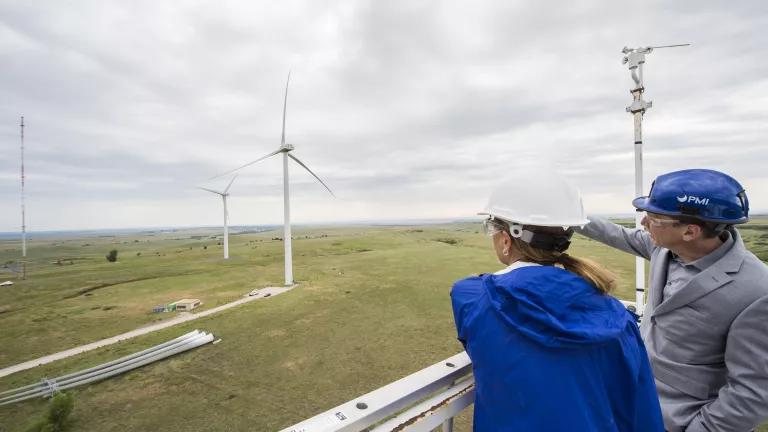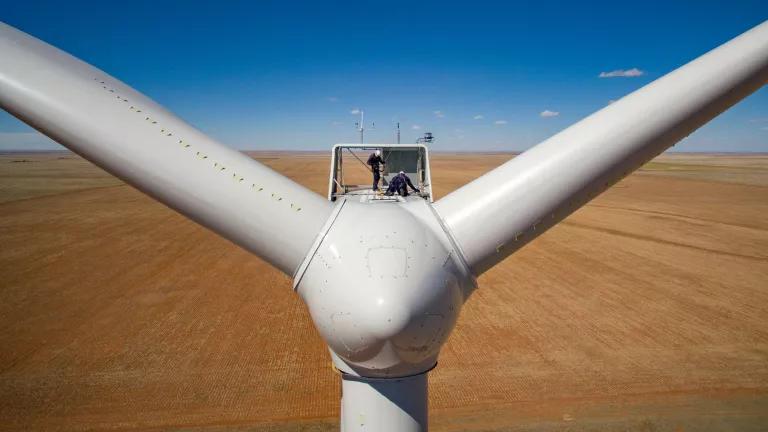Once Again, Dirty Energy Is Not in the Public Interest
It's time for a New Mexico utility to invest in clean energy over dirty coal and gas.

Emissions from a coal plant during the sunrise.
In a proceeding at the New Mexico Public Regulation Commission (PRC), one of New Mexico’s southernmost electric utilities wants to continue using dirty energy. Southwestern Public Service Company (SPS) is requesting that the PRC approve increased investment to support higher use of an aging coal plant located in the Texas desert and approve extending the lives of two gas plants. If approved, these decisions will have significant environmental, climate, and cost consequences. The coal plant will completely drain the water from an underground aquifer by 2028. All plants will increase local air pollution and contribute to climate-warming greenhouse gas emissions. With high-cost recovery from ratepayers, these old, dirty plants will cost New Mexicans money.
Approving these decisions would take a big step backward on progress toward New Mexico’s zero carbon requirement and is not in the public interest. NRDC, on behalf of the Coalition for Clean and Affordable Energy, acted as the lone opposition voice to this settlement, testifying against these fossil plants during a 6-day-long hearing. Read on to learn why this proposed settlement should be significantly modified or rejected to protect New Mexicans and the land of enchantment.
Clean Energy Should Be Considered
These resource decisions were inappropriately pushed by SPS into a general rate case, instead of being evaluated with other resource decisions during the established integrated resource planning process (IRP). As such, SPS did not compare these dirty energy options to any clean energy alternatives, including long-term contracts, power purchase agreements, or even SPS-owned clean resources, which have proven time and time again to be cheaper than coal.
SPS has yet to prove that these dirty energy plants are the lowest-cost option. Before SPS is allowed to recover costs associated with operating a coal plant at increased output and extending the lives of gas plants, it must evaluate clean energy options.
Running Out of Water Is a Risk
Right now, SPS plans to operate its coal plant at almost double the annual output that it operates at today. By running the coal plant at 4,000 GWh instead of 2,400 GWh per year, SPS plans to completely empty an underground aquifer in order to cool the plant. By SPS’s calculations, it will run out of “recoverable” water by exactly 2028.
The underground aquifer has been emptying for years. Many agricultural users can no longer access the water. Since SPS customers have already paid for this asset, SPS claims that completely emptying the water is “good” for the customers. This is not true. This aquifer is a sunk cost. Emptying it does not mean customers are getting a better deal. In fact, emptying the aquifer completely will lead to higher costs and adverse environmental impacts. It’s an enormous risk for customers in a drought-stricken West. Operating the coal plant less will conserve this precious resource and protect customers and the environment.
The story is the same for emissions and air pollution. While SPS claims that cumulative emissions remain the same if it runs the coal plant at a greater output, but retire it earlier, the annual emissions and air pollution impacts are drastically different. SPS’s proposed operation of 4,000 GWh per year will increase annual climate-warming emissions and toxic NOx pollution that harms people’s health. Running the coal plant at a lower output will reduce emissions and associated costs.
Unlimited Costs to Ratepayers
In the current settlement, SPS can recover close to $1,000,000 in operating costs from ratepayers from its coal plant, no matter how much the plant is actually used. The company can also recover an uncapped amount of NOx allowance costs, which are the costs that polluting power plants have to pay when they exceed their allotted amount of NOx pollution per year, as required by the EPA. The coal plant has consistently exceeded its allotted NOx allowances, leading to increasing costs for ratepayers. Moreover, the cost of each additional NOx allowance is set to increase by up to 8 times more than previous allowances this year due to the new EPA “Good Neighbor Rule,” which aims to decrease poisonous NOx pollution in certain states. These skyrocketing costs will be passed on to customers without limit.
The Commission should reject costs associated with increased utilization and uncapped NOx costs. This will put a strong incentive on SPS to use its coal plant more carefully and eliminate the risk of arriving in 2028 with no water, and no clean replacement resource.
The Time for Clean Energy Is Now
Clean energy is economic, prudent, and in the public interest. New Mexico’s law calls for “reasonable and consistent progress” towards clean energy goals. Increasing output from a coal plant and extending the lives of gas plants without comparing to alternative clean resources, all while allowing for uncapped costs to ratepayers, is not reasonable or consistent progress towards a zero-emission future. The Commission should reject the current proposal unless it is modified to limit cost recovery, encourage conservation of water, reduce emissions, and prevent excessive costs to ratepayers. It should also require SPS to analyze clean energy alternatives in the next IRP process.
It's time for New Mexico to acknowledge that dirty energy is not in the public interest. The future of New Mexico is clean, affordable, and reliable, protecting the land and communities we all love.




